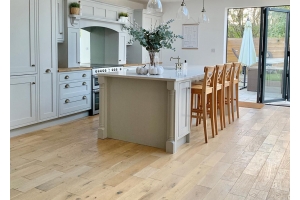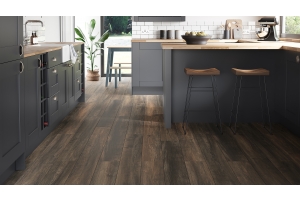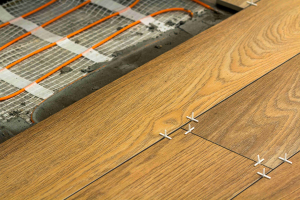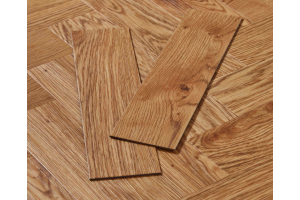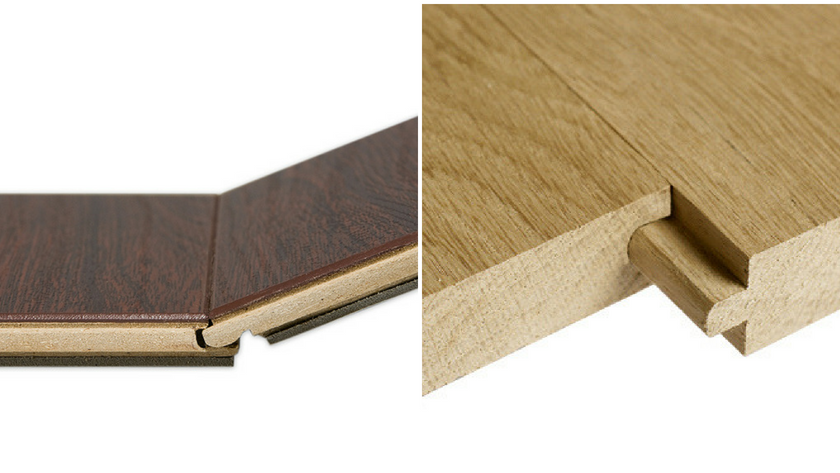
In amongst different variations of wood species, composition and design, there is another factor that those looking for a new Wood Flooring to consider; fitting mechanisms. Generally speaking, there are three main choices that fall into this category: tongue and groove, click, and solid blocks. As solid blocks are fairly self-explanatory, we’re going to put the spotlight on the remaining two. It’s tongue and groove versus click – who comes out on top?
The more traditional method of fitting flooring is tongue and groove. A protruding edge (the tongue) fits into a perfectly-sized gap (the groove) to allow two planks to slot together. Click, however, is more prominent in modern wood flooring. A simple mechanism makes for easy DIY fitting, with two planks fitting together and ‘clicking’ in place. This ensures a secure fit and locks the flooring together for quick installation.
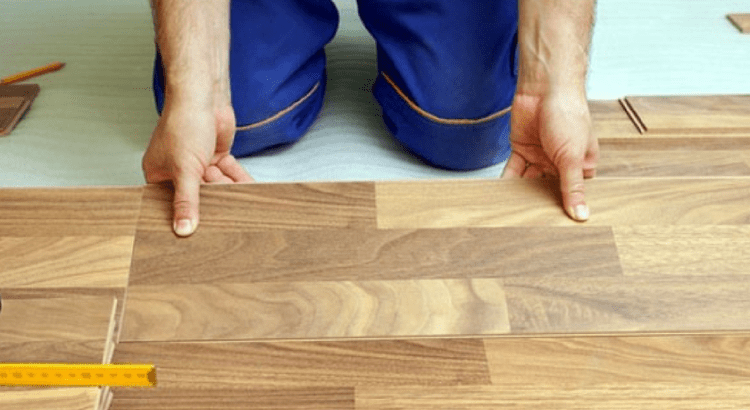
Let’s take a deeper look into the pros and cons of both tongue and groove and click wood flooring, and how they work when it comes to fitting.
Tongue and Groove
Each wooden plank features two ‘tongue’ sides and two ‘groove’ sides – one long and one short side of each. Essentially fitting together like a conventional jigsaw puzzle, the tongue and groove slot together on each plank when installing.
For a more secure fit, it’s suggested that the planks are glued and/or held together with nails or screws; a fitting method often referred to as secret nailing. With this being said, tongue and groove wood flooring can also be used in glue-down or floating installations. This makes it a versatile option when it comes to fitting.
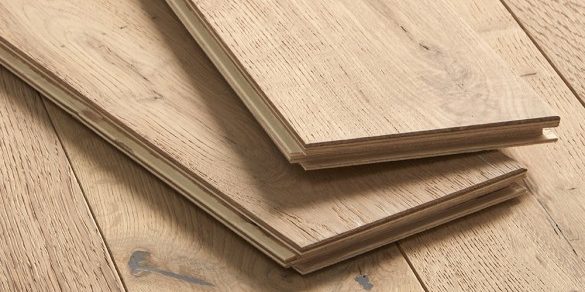
Pros
- Widely used, meaning there’s a huge variation in styles and finishes available
- Quicker and easier installation than fitting solid wood blocks
- Cheaper when compared to the same flooring but with a click system, due to lower cost to manufacturers to create tongue and grooves rather than the click system
- Reduced noise and minimal squeaking, due to the tongue and grooves slightly loosening over time to allow for necessary movement
- Heightened resistance to moisture and spills. The glue used to secure the board in place will act as a barrier to any accidental spillages
- Tongue and groove flooring can be installed over any subfloor, including joists
Cons
- Repairs to tongue and groove boards can be relatively difficult. Multiple boards will need to be removed, due to the glue and/or nails, especially if you’re replacing a board that sits in the middle of your flooring
- Installation may take longer than click flooring, due to glue and nailing requirements. This may also increase costs if you’re hiring a professional wood flooring fitter – although you can still fit the flooring yourself if you’d like to save and have the time to invest
- If the tongue and groove system isn’t held together properly, such as using too little glue, boards can separate over time. It’s important to use a sufficient amount to keep your flooring looking pristine for longer!
Click
Click (also known as click-lock) flooring is a modern twist on the traditional tongue and groove system. Its rising popularity comes from how easy it is to install, especially for those who are trying their hand at a DIY fitting.
Click operates in a similar way to tongue and groove, but, instead of just slotting in place, the protruding piece ‘clicks’ and locks into place. In its simplest form, a click system uses two hooked shapes – although some manufacturers may use their own patented mechanism. Click flooring is most commonly fitted using a floating installation over underlay.
See also: Looking to fit your new wood flooring yourself? Check out our go-to guide on how to fit Laminate Flooring.
Pros
- Incredibly easy to fit, perfect for DIY installations. If using a professional fitter, savings will be made due to reduced labour costs; on average these savings total around 20%
- Eliminates the needs for nails and glue, as the flooring locks in place thanks to the click system
- Easy to replace a damaged board, simply clicking the board out and replacing with a new one
- Due to its rising popularity, the range of designs and styles is rapidly increasing, giving you more options to choose from when it comes to your new Wood Flooring.
Cons
- Click flooring can’t be fitted over joists – it requires a solid subfloor underneath to provide sufficient support
- The flooring itself can be more expensive due to higher manufacturing costs. Luckily, the majority of our Laminate Flooring use a click-lock system, and is a perfect cost-effective alternative to real wood flooring. We also have a vast range of Luxury Vinyl Tiles which adopt the click fitting mechanism.
- As it needs to be used in a floating installation, click flooring requires a high-quality underlay to reduce noise and maximise comfort.
Both tongue and groove and click flooring have their benefits and drawbacks. If you’re unsure which option is right for you, then our friendly team of flooring professionals are on-hand to help. Call us on 03333 201933 or email [email protected].








